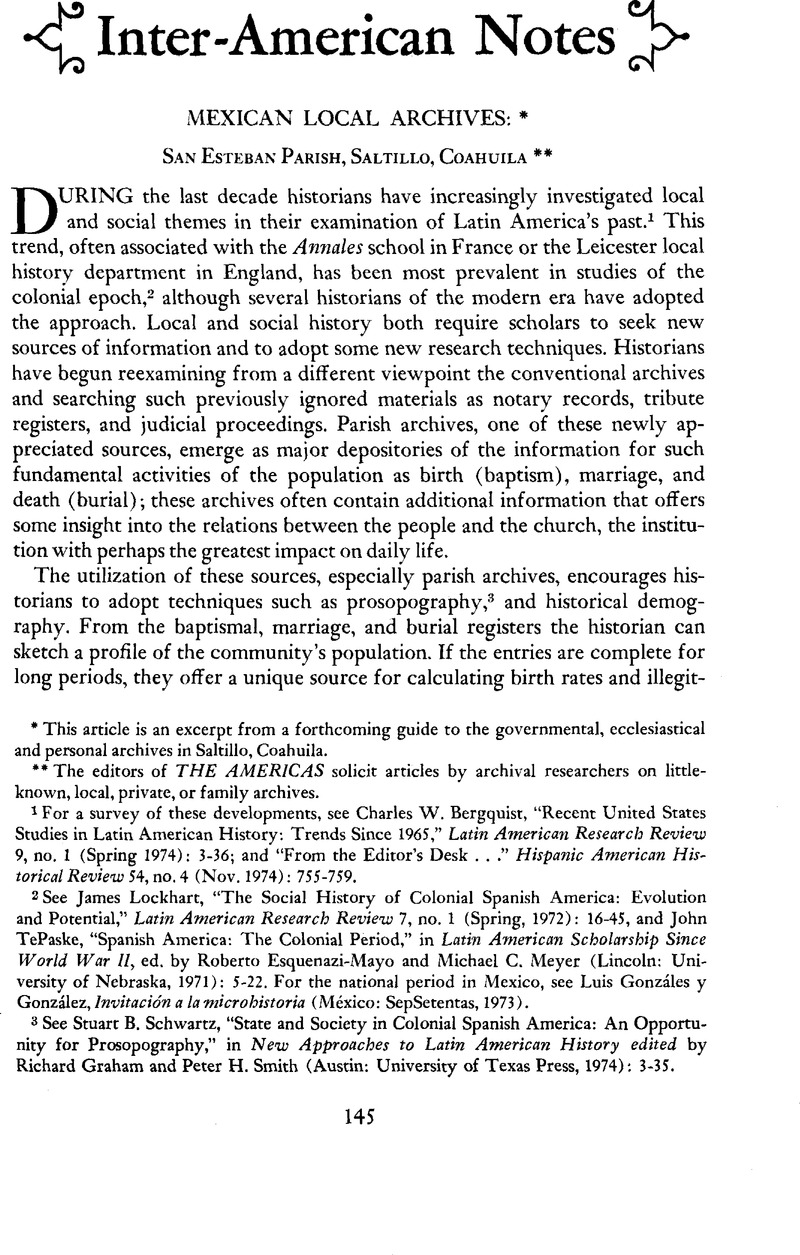Article contents
San Esteban Parish, Saltillo, Coahuila**
Published online by Cambridge University Press: 11 December 2015
Abstract

- Type
- Inter-American Notes
- Information
- Copyright
- Copyright © Academy of American Franciscan History 1975
Footnotes
This article is an excerpt from a forthcoming guide to the governmental, ecclesiastical and personal archives in Saltillo, Coahuila.
The editors of THE AMERICAS solicit articles by archival researchers on little-known, local, private, or family archives.
References
1 For a survey of these developments, see Bergquist, Charles W., “Recent United States Studies in Latin American History: Trends Since 1965,” Latin American Research Review 9, no. 1 (Spring 1974): 3–36 Google Scholar; and “From the Editor’s Desk …” Hispanic American Historical Review 54, no. 4 (Nov. 1974) : 755–759.
2 See Lockhart, James, “The Social History of Colonial Spanish America: Evolution and Potential,” Latin American Research Review 7, no. 1 (Spring, 1972): 16–45 Google Scholar, and TePaske, John, “Spanish America: The Colonial Period,” in Latin American Scholarship Since World War II, ed. by Esquenazi-Mayo, Roberto and Meyer, Michael C. (Lincoln: University of Nebraska, 1971): 5–22.Google Scholar For the national period in Mexico, see y Gonzalez, Luis Gonzáles, Invitación a la microhistoria (México: SepSetentas, 1973).Google Scholar
3 See Schwartz, Stuart B., “State and Society in Colonial Spanish America: An Opportunity for Prosopography,” in New Approaches to Latin American History edited by Graham, Richard and Smith, Peter H. (Austin: University of Texas Press, 1974): 3–35.Google Scholar
4 For an excellent example of the application of parish records to this kind of subject, see Carmagnani, Marcelo, “Demografía y sociedad: la estructura social de los centros mineros del norte de México, 1600–1720,” Historia Mexicana 21, no. 83 (enero, 1972): 419–459.Google Scholar
5 “Los libros parroquiales como fuente para la historia demográfica y social novohispana,” Historia Mexicana 21, no. 83 (enero, 1972) : 389–418.
- 1
- Cited by


